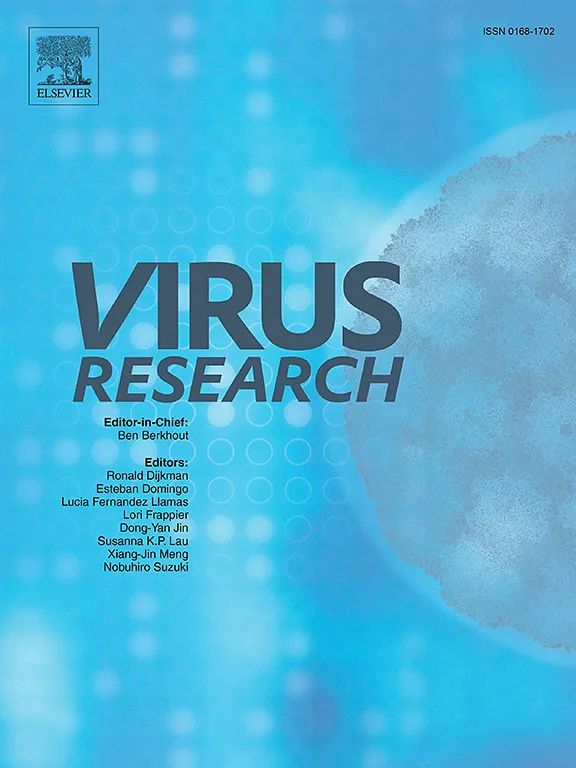Estimating the impact of direct acting antiviral therapy on the prevalence of hepatitis C virus infection using phylogenetics
IF 2.5
4区 医学
Q3 VIROLOGY
引用次数: 0
Abstract
Introduction
Australia has provided unrestricted subsidized access to direct-acting antiviral (DAA) treatment for hepatitis C virus (HCV) infection since 2016. Epidemiological surveillance estimates suggest prevalence of chronic HCV infection has declined since 2016, but these estimates are not separated by genotype and may not capture ‘hidden’ infected populations, notably the most marginalized groups affected, including people who inject drugs and people in prison. This study used phylogenetics to assess whether epidemiological estimates of declining HCV prevalence in the prisons of New South Wales, Australia due to DAA scale up could be reproduced.
Method
Near-full-length 280 HCV consensus sequences (GT1a: n = 140, GT3a: n = 140) sampled between 2006 – 2019 from two prison-based cohort studies in NSW were used for phylogenetic estimates. These included 110 acute infection sequences (GT1a: n = 48, GT3a: n = 62) which were considered in a separate sensitivity analysis given the differences in virus mutation rates in acute and chronic infection. Changes in the effective population size of infected people for each genotype were explored with BEAST software suite (v1.10) using a coalescent Bayesian skyline approach.
Results
Both the main and sensitivity analyses for GT3a showed a reduction in the effective population size with the latter showing a 36 % decline between 2011–2019 which is more concordant with the decline estimated from non-phylogenetic methods. A decline of similar magnitude was not demonstrated for GT1a. Overall, the analyses using acute infection sequences only were closer to the trends of independent epidemiological estimates.
Conclusions
An adequately powered Bayesian evolutionary analysis using acute stage infection sequences may reproduce the decline in HCV infections observed by traditional epidemiological methods during DAA scale up.

用系统发育学估计直接抗病毒治疗对丙型肝炎病毒感染流行率的影响。
自2016年以来,澳大利亚为丙型肝炎病毒(HCV)感染提供了不受限制的直接作用抗病毒(DAA)治疗补贴。流行病学监测估计表明,自2016年以来,慢性丙型肝炎病毒感染的流行率有所下降,但这些估计没有按基因型分开,可能没有包括“隐藏的”感染人群,特别是受影响的最边缘化群体,包括注射吸毒者和监狱中的人。本研究使用系统遗传学来评估澳大利亚新南威尔士州监狱中由于DAA规模扩大而导致HCV患病率下降的流行病学估计是否可以复制。方法:采用2006 - 2019年间从新南威尔士州两项基于监狱的队列研究中采样的近全长280个HCV一致性序列(GT1a: n=140, GT3a: n=140)进行系统发育估计。其中包括110个急性感染序列(GT1a: n=48, GT3a: n=62),考虑到急性和慢性感染中病毒突变率的差异,将其纳入单独的敏感性分析。使用BEAST软件套件(v1.10),使用联合贝叶斯天际线方法,探索每种基因型感染者的有效种群大小的变化。结果:GT3a的主分析和敏感性分析均显示有效种群规模下降,后者在2011-2019年期间下降了36%,这与非系统发育方法估计的下降更为一致。GT1a没有出现类似程度的下降。总的来说,使用急性感染序列的分析更接近独立流行病学估计的趋势。结论:利用急性期感染序列进行的充分有力的贝叶斯进化分析可能重现传统流行病学方法在DAA扩大期间观察到的HCV感染下降。
本文章由计算机程序翻译,如有差异,请以英文原文为准。
求助全文
约1分钟内获得全文
求助全文
来源期刊

Virus research
医学-病毒学
CiteScore
9.50
自引率
2.00%
发文量
239
审稿时长
43 days
期刊介绍:
Virus Research provides a means of fast publication for original papers on fundamental research in virology. Contributions on new developments concerning virus structure, replication, pathogenesis and evolution are encouraged. These include reports describing virus morphology, the function and antigenic analysis of virus structural components, virus genome structure and expression, analysis on virus replication processes, virus evolution in connection with antiviral interventions, effects of viruses on their host cells, particularly on the immune system, and the pathogenesis of virus infections, including oncogene activation and transduction.
 求助内容:
求助内容: 应助结果提醒方式:
应助结果提醒方式:


